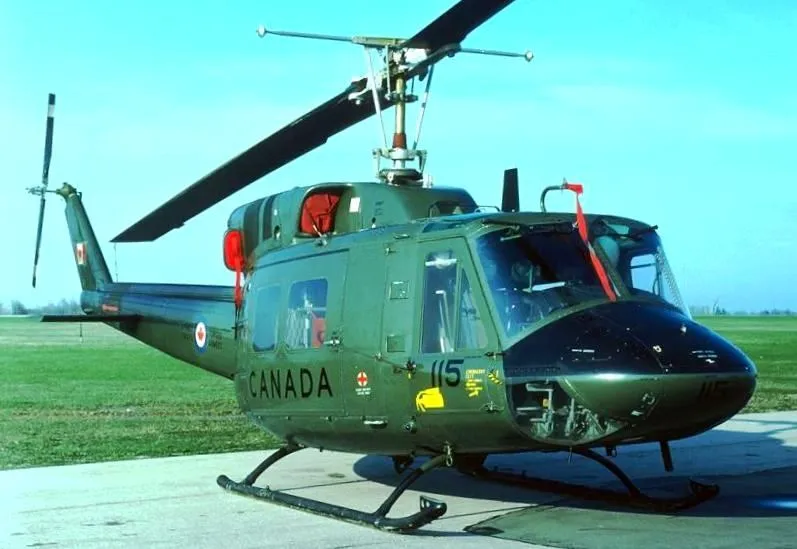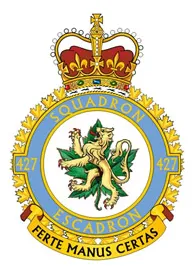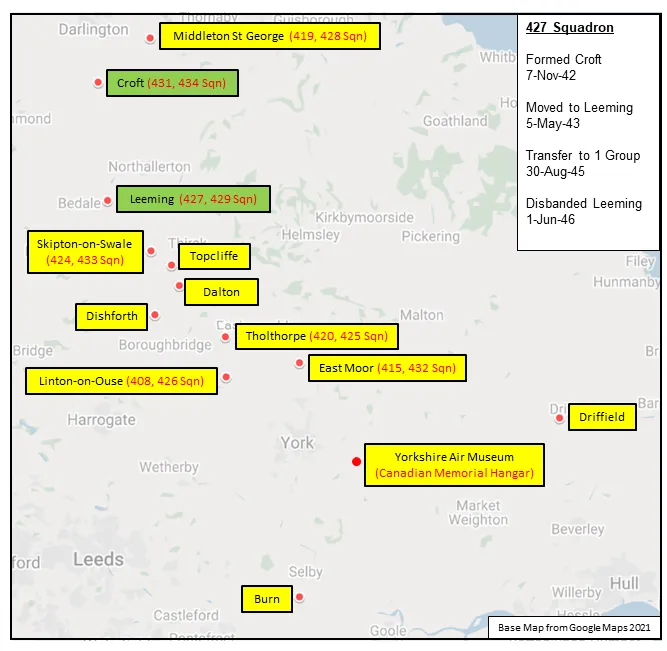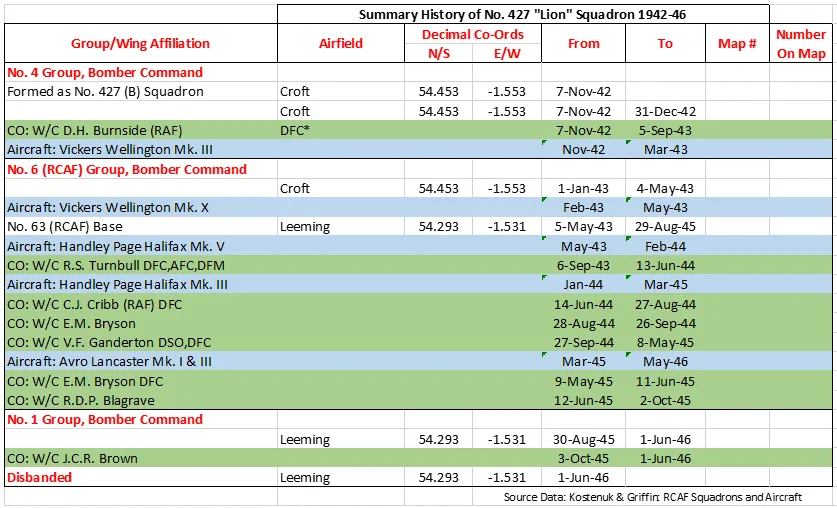McConnell, Daniel Mark
Killed in Flying Accident 1988-01-28


Birth Date: 1961-August-12
Born: Montreal, Quebec
Son of James McConnell.
Home: Montreal, Quebec
Enlistment: Toronto, Ontario
Enlistment Date: 1983-07-08
Service
RCAF
Unit
427 Sqn- Squadron
Ferte Manus Certas Strike sure
Base
Rank
Captain
Position
Captain
Service Numbers
475296547
Home
 Montreal, Quebec
Montreal, Quebec
First Burial
 Canada
Canada
Twin Huey 135119
Bell CH-135 Twin Huey

Bell CH-135 Twin Huey Helicopter (Serial No. 135115)
The Bell UH-1N Twin Huey is a medium military helicopter. A member of the extensive Huey family, it first flew in 1969. The CUH-1N Twin Huey (later CH-135 Twin Huey) was the original version, first ordered by the Canadian Forces. The UH-1N has a 15-seat configuration, with one pilot and 14 passengers. In cargo configuration, it has an internal capacity of 220 ft³ (6.23 m³). An external load up to 5,000 lb (2,268 kg) can be carried. The UH-1N was later developed into the civilian Bell 212.
Based on the stretched-fuselage Bell 205, the Bell 212 was originally developed for the Canadian Forces (CF) under the designation CUH-1N Twin Huey. Later, the CF adopted a new designation system and the aircraft was redesignated CH-135 Twin Huey. The CF approved the development of the aircraft on 1 May 1968 and purchased 50 aircraft, with deliveries commencing in May 1971.
The UH-1N's main rotor is powered by a PT6T-3/T400 Turbo Twin Pac made up of two Pratt & Whitney Canada PT6 power sections that drive a single output shaft. They are capable of producing up to 1,342 kW (1,800 shp). Should one power section fail, the remaining section can deliver 671 kW (900 shp) for 30 minutes or 571 kW (765 shp), enabling the UH-1N to maintain cruise performance at maximum weight.
The aircraft were retired from the Canadian Forces starting in 1996 and struck off strength in December 1999. Two CH-135s are on display in museums, one at the Canada Aviation Museum in Ottawa and one at the National Air Force Museum of Canada at CFB Trenton.Wikipedia (with revisions)
 Wikipedia Bell CH-135 Twin Huey
Wikipedia Bell CH-135 Twin Huey
 Canada Aviation and Space Museum
Canada Aviation and Space Museum
427 Sqn Ferte Manus Certas ("Lion")
History of the Squadron during World War II (Aircraft: Wellington III, X, Halifax III, V, Lancaster I, III)

427 Squadron was the RCAF's 25th squadron and eighth bomber squadron to be formed overseas in WWII. It was formed at Croft, Yorkshire, England on 7 November 1942 as part of No 4 Group of RAF Bomber Command. With squadron code letters ZL it flew Wellington Mk III aircraft. On 1 January 1943 it joined No 6 (RCAF) Group, remaining at Croft until May of 1943, when it moved to Leeming, Yorkshire , where it remained for the rest of the war in Europe. Its duties were to take part in strategic and tactical bomber operations. It briefly re-equipped with Vickers Wellington Mk X before acquiring Handley Page Halifax Mk V aircraft in May 1943. In January 1944 it re-equipped again with the improved Halifax Mk III. Finally it was equipped with Avro Lancaster Mks I and III in March 1945. After the termination of hostilities in Europe, the squadron remained in England and transferred to No 1 Group. It participated in operation EXODUS, the repatriation of POW's and operation DODGE, bringing back British troops from Italy. The squadron disbanded at Leeming on 1 June 1946.
In the course of WWII the squadron flew approximately 3300 operational sorties in the course of which either 88 (Moyes) or 90 (Kostenuk) aircraft were lost and approximately 10,300 tons of bombs were dropped. The squadron earned 4 DSO's, 147 DFC'c and 6 Bars to DFC, 1 AFC, 2 CGM's, 16 DFM's and 8 MiD. Battle Honours were: English Channel and North Sea 1943-45, Baltic 1944-45, Fortress Europe 1943-44, France and Germany 1944-45, Biscay Ports 1943-44, Ruhr 1943-45, Berlin 1943-44, German Ports 1943-45, Normandy 1944, Rhine, Biscay 1944. Wikipedia, Moyes, Kostenuk and Griffin
Squadron History (Bomber Command Museum PDF)
Maps for Movements of 427 Squadron 1942-46

427 Squadron History Summary 1942-46

History of the Squadron Post-WWII (Aircraft: Sabre 2, 5, 6, Starfighter, Kiowa, Twin Huey, Griffon)
The squadron was reactivated on 1 August 1952 as a fighter squadron in the Air Defence Command, based in St Hubert, Quebec and equipped with Canadair F-86 Sabre Mk 2s. The Squadron moved on to Sabre Mks. 5 and 6 while working out of St Hubert before deploying to Zweibrücken, Germany and becoming a part of 3 Wing, in March-April 1953. The Squadron continued in this role, operating out of Germany, for another decade, participating in many multi-national NATO exchanges and exercises with destinations including; Rabat, Morocco, Decimomannu, Sardinia and France. The squadron moved to Grostenquin, France in June 1962, but was inactive pending its conversion to the CF-104 Starfighter. On 15 December 1962, the Squadron was deactivated as a Fighter squadron and reactivated on the 17th as a Strike/Attack squadron, becoming the first Canadian squadron to be equipped with the Starfighter. This change in aircraft necessitated changes in training and tactics. In 1969 the squadron moved from Zweibrücken to Baden-Soellingen , and with that, a change from 3 Wing to 4 Wing.
The Squadron disbanded again on 1 July 1970 and was re-established on 1 January 1971 as a Tactical Helicopter Squadron with 10 Tactical Air Group of Mobile Command, later simply called ‘Air Command.’ The first helicopter used after this transition was the CH-136 Kiowa light observer helicopter and, simultaneously, the CH-135 Twin Huey utility helicopters. The Squadron participated in many operations, including: Norway, Egypt, Sinai and Central America. After switching to a fleet of only CH-135 Twin Hueys in 1992, the squadron deployed to Somalia in 1993 and to Haiti on Operations. In July 1997 the Squadron received the BELL CH-146 Griffon Helicopter fleet to replace the Twin Huey. By 1999, the Griffon’s had participated in operations in Canada and in Honduras. The early 2000’s saw rotations going to Bosnia.
On 1 February 2006, 427 Squadron became part of Canadian Special Operations Forces Command (CANSOFCOM), as a Special Operations Aviation Squadron (SOAS), with the responsibility of providing air capability to various units with the Canadian Special Forces Command, where it remains today, located at Canadian Forces Base Petawawa, Ontario . In recent years, 427 SOAS participated in Exercise FLINTLOCK, an annual regional exercise among African, Western and United States counterterrorism forces, in multiple countries in West Africa. It also deployed to the Middle-East as part of Operation IMPACT, the Canadian Armed Forces mission to build the military capabilities of Iraq, Jordan and Lebanon, and set the conditions for their long-term success. 
 Canadian Virtual War Memorial
Canadian Virtual War Memorial